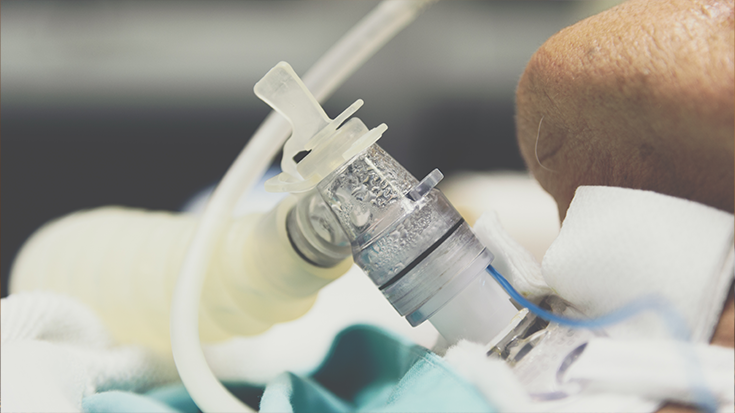
Foam Dressing Reduces PDT Tracheostomy MDRPIs to Zero
New York investigators who implemented a quality improvement project aimed at reducing the number of medical device-related pressure injuries (MDRPIs) following a tracheostomy using the percutaneous dilation technique (PDT) actually noted zero MDRPIs after their project was implemented.
The new clinical process involved a revised PDT tracheostomy procedural kit and documentation. A polyurethane foam dressing was placed under the tracheostomy flange during insertion and secured with sutures and a flexible holder. The dressing remained in place for seven days and the site was assessed every 12 hours or sooner. After seven to ten days, the dressing was changed to a standard nonwoven gauze drain sponge as clinically indicated.
In 2018, before the initiative was launched, tracheostomy MDRPIs accounted for 0.19% of the health care-associated pressure injuries seen in patients in the 18-bed ICU. That translated to two patients, and both of those patients had PDT tracheostomies.
The tracheostomy MDRPI rate went to zero in 2019 and remained at zero for the following three years. The foam dressing was used in all of the 22 PDT tracheostomies performed in the ICU during the four year period.
The intervention was based on evidence-based resources from the Preventing Pressure Injuries Toolkit funded by the Agency for Healthcare Research and Quality. The study was published by AACN Advanced Critical Care. Read More

New CAPTURE Tool Helps Catch COPD in the Primary Care Setting
Identifying patients at risk for COPD in the doctor’s office has been an ongoing challenge. New research published by JAMA suggests a tool developed by U.S. investigators can help.
The screening tool is known as CAPTURE and relies on the answers to five questions, along with the results of a lung capacity test that can be performed in a primary care setting. When these measures were combined, they successfully identified those who should be referred for more extensive testing and a clinical evaluation about half of the time.
The study was conducted among 4,325 patients at 100 primary care sites across the country. The researchers compared results from the CAPTURE tool with those from spirometry, finding that spirometry identified 110 patients with clinically significant COPD. CAPTURE flagged 53 of these cases for more evaluation.
While the tool didn’t find all of the COPD cases, the authors note that it did pick up on breathing symptoms in people that would not rise to the level of COPD but might have otherwise been overlooked. Overall, 532 people were flagged by CAPTURE as having some kind of breathing problem.
“Unfortunately, many patients with COPD go undiagnosed and are often not picked up until their disease is quite advanced. As treatments for COPD improve, we have increasing ability to prevent morbidity and mortality among COPD patients,” said MeiLan Han, MD, a co-principal investigator on the study from the University of Michigan. “That’s why studies such as CAPTURE are so important to identify patients in primary care who would benefit from treatment.” Read More

A New Fix for Alarm Fatigue?
Alarm fatigue is a fact of life in hospitals and many strategies have been proposed to fix the problem, most of them centering on a reduction in the number of alarms that sound each day.
According to researchers from McMaster University and Vanderbilt University, a better tactic might be to simply change the sounds the alarms make. In a study that compared the effect of industry-standard flat tones with the effect of alarm tones that rise and fall like musical notes on people engaged in a speech recognition task designed to simulate the real-world demands on the attention of health care workers, they found the musical tones could be recognized without affecting speech recognition.
The same outcome occurred when they used percussive alarms.
In a separate experiment, the participants were asked to rate how annoying they found the various alarms and results showed musical alarms to be less annoying than the flat tones used for alarms today.
“Making the sounds less disruptive is a simpler solution than redesigning alarm management procedures and protocols industry wide,” said study author Michael Shultz, who is a professor of music cognition and percussion at McMaster. “By simply changing the sounds we can make alarms that allow for better staff communication and reduce recovery times. This can even save lives.”
The study will be published in an upcoming edition of The British Journal of Anesthesia. Read More
Email newsroom@aarc.org with questions or comments, we’d love to hear from you.













